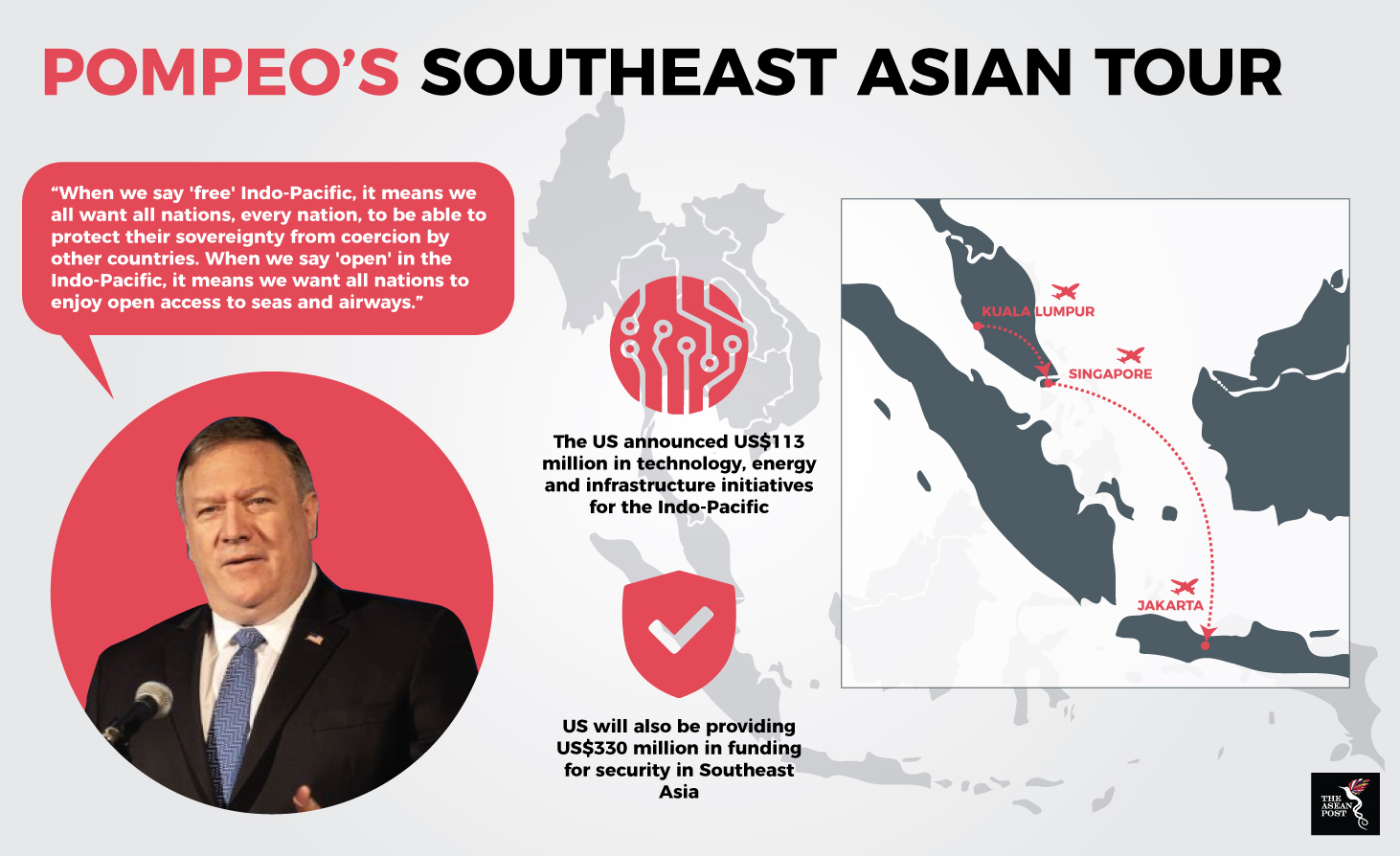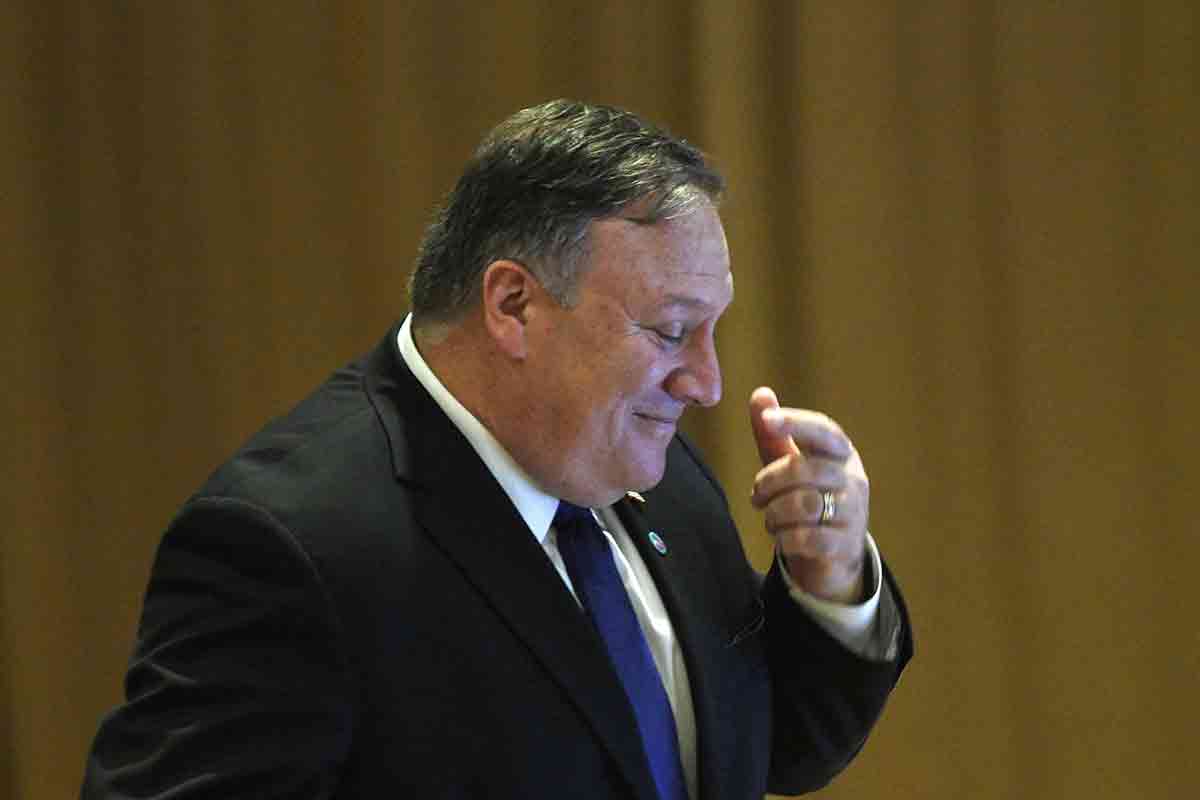Tensions between China and the United States (US) do not seem like easing anytime soon as US State Secretary Mike Pompeo wrapped up his recent tour of Southeast Asia.
In this brief tour, Pompeo stopped by three countries – Malaysia to meet with its newly elected Prime Minister Dr Mahathir Mohamad, Singapore for the ASEAN Foreign Ministers’ Meeting, and Indonesia for a meeting with President Joko Widodo.
Prior to his tour of Southeast Asia, Pompeo called for a “free and open” Indo-Pacific. The increasing use of the term “Indo-Pacific” by the US reveals the shift in its priorities in Asia. Previously the term Asia-Pacific was more frequently used by US policy makers. However, with India's growing prominence and China making inroads in the Indian and Pacific Oceans, the Indo-Pacific is now the focus of American foreign policy.
"When we say 'free' Indo-Pacific, it means we all want all nations, every nation, to be able to protect their sovereignty from coercion by other countries," he said. "When we say 'open' in the Indo-Pacific, it means we all want all nations to enjoy open access to seas and airways. We want the peaceful resolution of territorial and maritime disputes," added Pompeo.
 Source: Various
Source: Various
Pompeo’s call for a free and open Indo-Pacific is seen by many as a dig at China’s recent moves there and his visit here outlines US’ intentions to counter China’s growing influence.
For the past few years China has rapidly increased its clout in the region. China has integrated many Southeast Asian cities into its Belt and Road Initiative (BRI) and has poured billions of dollars in infrastructure investments in ASEAN member countries. China has also developed a strong relationship with many of the leaders there, namely Hun Sen, the Prime Minister of Cambodia and Philippine President Rodrigo Duterte.
Aside from that China has also increased its military presence in the South China Sea. Satellite images show that China has established outposts in the Spratly Islands. The photos revealed that the reefs within the Spratly Islands have been transformed into artificial islands that could act as air and naval bases.
With China’s influence in the region clearly growing, it is no surprise that Pompeo has made the trip to Southeast Asia to reaffirm the US’ commitment to the region. In the run up to the tour, Pompeo announced that Washington will invest US$113 million in technology, energy and infrastructure initiatives in the Indo-Pacific. Furthermore, in Singapore, Pompeo announced that the US will be providing US$300 million in funding for security cooperation in Southeast Asia.
"As part of our commitment to advancing regional security in the Indo-Pacific, the United States is excited to announce nearly US$300 million dollars of new funding to reinforce security cooperation throughout the entire region," Pompeo said.
While China is not mentioned explicitly, Pompeo lays out the intentions of the US clearly enough. The US is looking to ASEAN countries to counter Chinese influence. However, Pompeo’s promise of funding may not be enough. The proposed US$113 million investment in technology, energy and infrastructure along with the US$330 million in funding for security pales in comparison with the amount of funding China has provided to ASEAN member states.
It could also be too little too late for the US in trying to sway ASEAN. Ever since Trump became president, he has rolled back on Obama’s “pivot to Asia” policy and introduced protectionist economic measures which saw the US pulling out from the Trans Pacific Partnership (TPP) agreement that involved most Southeast Asian countries.
While the language of the US in its statement regarding a “free and open” Indo-Pacific may sound neutral, but the reality is that a free and open Indo-Pacific benefits the US more. As mentioned earlier, a free and open Indo-Pacific was never really an issue until China started advancing into the region. A return to the status quo prior to that, would only mean the US would be the sole power within the Indo-Pacific.
What’s important isn’t whether either the US or China should have more influence in the region, but for ASEAN to remain resilient and maintain its centrality. Maintaining its centrality would ensure that the region benefits from both countries without being beholden to any particular one.
